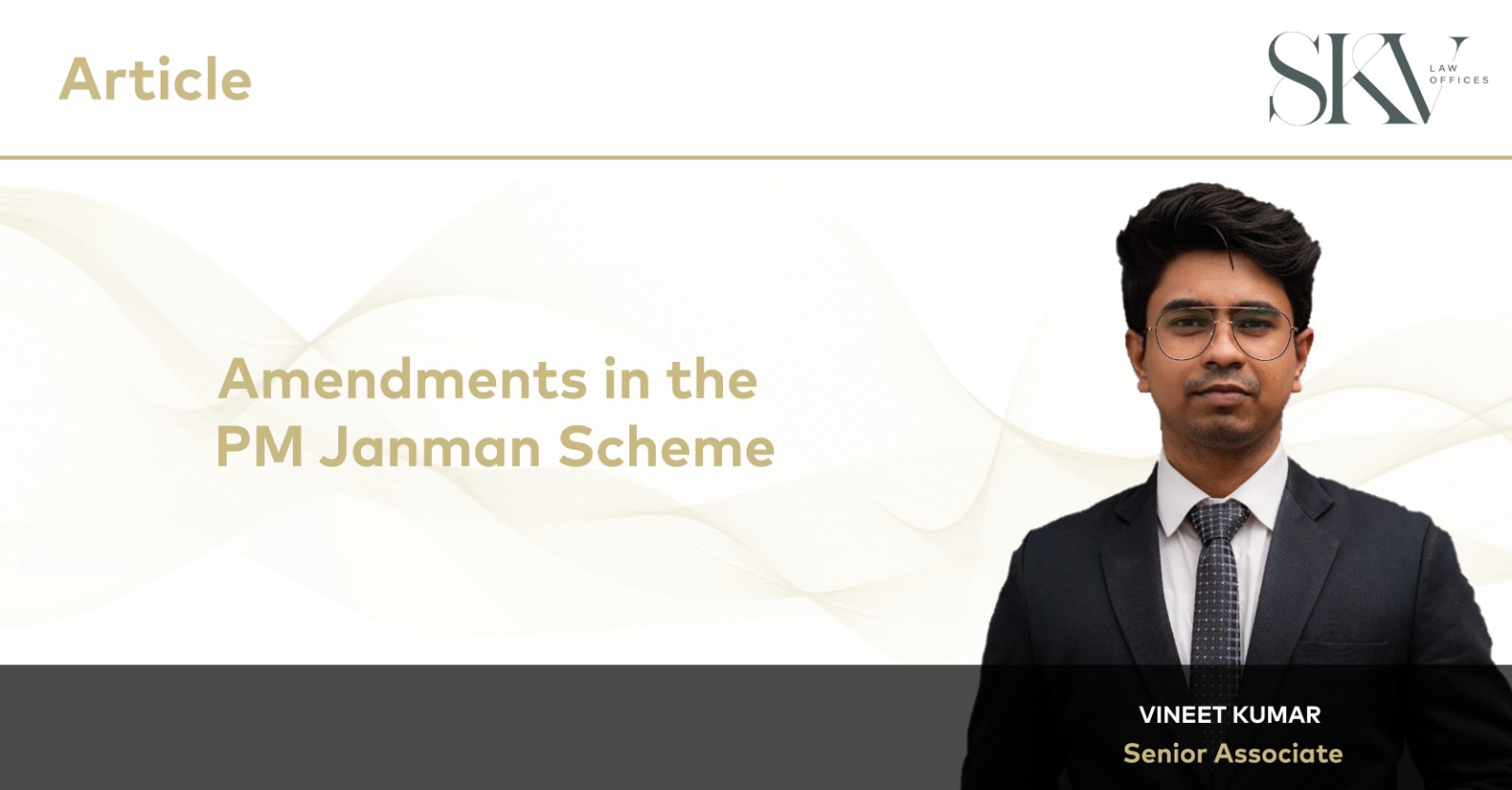Amendments in the PM Janman Scheme
05.06.2024
Authored by: Vineet Kumar, Senior Associate
The Ministry of New and Renewable Energy, Government of India (“GoI”) had launched the Pradhan Mantri Janjati Adivasi Nyaya Maha Abhiyan (“PM JANMAN”) which in November 2023 as a significant initiative aimed at addressing the development needs of Particularly Vulnerable Tribal Groups (“PVTGs”) in India. By focusing on basic necessities such as safe housing, clean drinking water, sanitation, education, healthcare, nutrition, infrastructure, and livelihood opportunities, PM JANMAN aims to uplift these marginalized communities, which could not reap the benefits of various schemes of GoI even after more than 70 years of independence due to remoteness of their location, lack of awareness, lack of connectivity, and improve their quality of life. The scheme reflects a commitment of the GoI to prioritize the needs of PVTGs and ensuring the provision of essential services and infrastructure as the scheme is to be implemented in a stipulated strict time frame of 3 years. By depicting such an approach, the PM JANMAN aims to reduce disparities and promote inclusive development by saturating PVTG households and habitations with basic facilities such as safe housing, clean drinking water and sanitation, electricity, road and telecom connectivity etc.
The scheme has been structured in a manner that it emphasizes on 11 crucial interventions. This shows the holistic strategy on the part of GoI for meeting the needs of PVTGs across the country. In total, there are 9 ministries under GoI which are vested with the responsibility of implementation of these 11 crucial interventions. Through this synergy, PM-JANMAN endeavors to uplift PVTGs and augment their overall well-being, thereby fostering a more inclusive and equitable society.
Now, with the recent amendments introduced in March 2024, the scope of the PM JANMAN scheme has been broadened to include installation of solar mini-grids for household electrification, Solar Home Lightning System as well as Solarisation of Multi-Purpose Centers. These changes aim to benefit PVTG areas located in approximately 18 States, such as Manipur, Odisha, Rajasthan, Tamil Nadu, Uttar Pradesh, Tripura etc. In so far as the implementation of PM JANMAN on the ground level, the first challenge that is faced is the lack of data. The Census of 2011 revealed that the tribal population constitutes approximately 8.9% of India’s total population. This demographic group encompasses a significant portion of the nation’s populace, reflecting the cultural and ethnic diversity inherent within the country. The complexity and diversity of the needs and capacities of PVTGs vary significantly across different regions and States of India. This diversity underscores the importance of adopting enlightened and flexible approaches and interventions tailored to the specific contexts and requirements of each community.
Yet another barrier is the stigma and discrimination experienced by PVTGs in the conventional society as well as the lack of enlightenment and public awareness amongst the stakeholders and general public. Additionally, the scheme requires coordination and convergence with the schemes already in place and programmes at both central and State levels so as to ensure effective and efficient delivery and utilization of resources and services. By embracing enlightened and flexible approaches, interventions aimed at addressing the needs of PVTGs can be more effective, sustainable, and empowering. They can contribute to the holistic development and well-being of these marginalized communities while respecting their rights, dignity, and cultural heritage.


